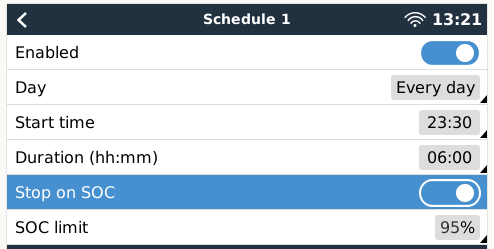Good morning.
My new 48/5000 is now fully operational, and charging 4 x Pylontech 3000c to 100% each night, within the 4hr window.
I also have an EV, with dumb charger. It occurs to me that timing might be important when I charge both at the same time.
My ESS timer is set to start start and end charging within the window
Question: if my battery reaches 100% early, will the EV charger switch to charge from the battery, thereby depleting it? Or does the ESS remain in charge-only mode for the full during of its programmed charge window?
Thanks again!

